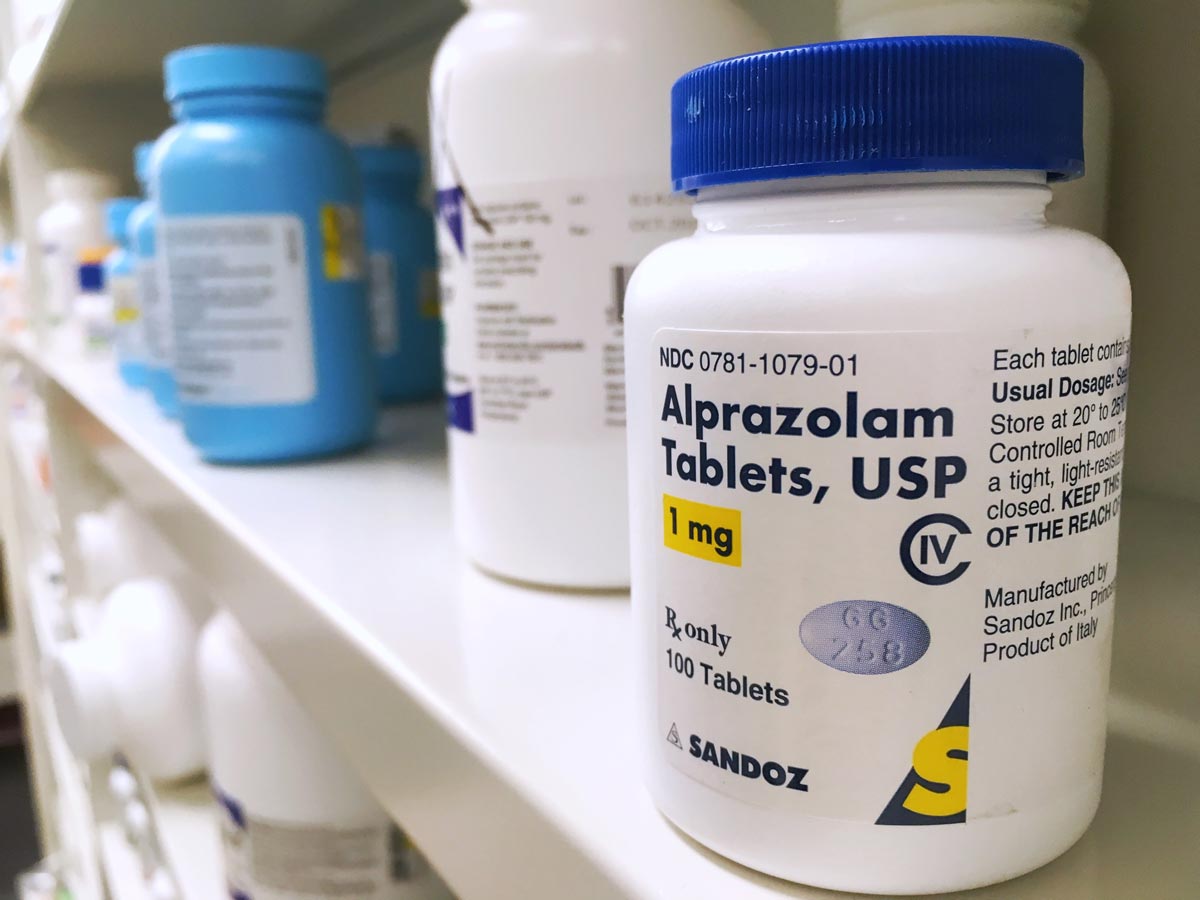 Xanax, the most common name for the drug Alprazolam, is one of the most commonly prescribed prescription drugs in the United States. In fact, in 2018, there were over 20.4 million Xanax prescriptions. That makes sense, as the drug has a long history of use in treating anxiety disorders, panic disorders, and nausea because of chemotherapy. Anxiety and panic disorders affect 18.1% of the United States population.
Xanax, the most common name for the drug Alprazolam, is one of the most commonly prescribed prescription drugs in the United States. In fact, in 2018, there were over 20.4 million Xanax prescriptions. That makes sense, as the drug has a long history of use in treating anxiety disorders, panic disorders, and nausea because of chemotherapy. Anxiety and panic disorders affect 18.1% of the United States population.
Until recently, Xanax was also prescribed for long periods. Many users have been on Xanax for 5-10 years. Today, concerns over substance abuse, Xanax addiction, and long-term side effects and impacts have limited how and when Xanax is prescribed. This means a doctor today will not likely prescribe Xanax for more than a few months. Instead, it’s usually prescribed as a supplement or addition to behavioral therapy. At the same time, even short-term Xanax prescriptions, complete with a Risk Evaluation and Management Schedule (REMS) can result in unwanted side effects like dependence and even addiction. Understanding both the common and rare side effects of Xanax will help you to make appropriate decisions and better manage the drug.
Table of Contents
ToggleShort-Term Side Effects of Xanax
Xanax is a short-acting tranquilizer or muscle relaxant, which affects the brain by interacting with the GABA receptor. This affects the central nervous system, causing relaxation and calm, through a combination of relaxing the muscles and reducing synaptic transmission rates in the brain. Xanax is a combination of benzodiazepine and triazole, both of which have early on-set effects for users. In most cases, these effects last the first 1-2 weeks of usage and then, typically, go away. These include:
- Nausea and vomiting
- Extreme lethargy or tiredness
- Sedation
If these symptoms don’t go away within the first few weeks, it may be important to contact your doctor.
Common Side Effects of Xanax
Xanax has a wide side effect profile. In fact, it has over a dozen common side effects. A common side effect is one that is likely and unusual when taking a medication. It is not necessarily going to appear after you take the drug, but if it does, you should not be alarmed. However, it’s always a good idea to review side effects when taking Xanax and to discuss them with your doctor if they are interfering with quality of life, interacting with other medications, or otherwise are disruptive.
Common side effects include:
 Dry mouth or cotton mouth
Dry mouth or cotton mouth - Nausea
- Difficulties concentrating
- Lack of inhibition/ risk taking behavior
- Drowsiness
- Dizziness or lightheadedness
- Fatigue
- Impaired coordination
- Vertigo
- Trembling
- Twitching
- Feeling shaky
- Restlessness
- Shortness of breath
- Heart palpitations / accelerated heart rate
- Clammy hands
- Diarrhea or abdominal pain
- Hot flashes
- Frequent urination
- Difficulty swallowing
- Feeling on edge
- Exaggerated startle responses
- Difficulty falling asleep/ easy wakefulness
These symptoms are common in that most people taking Xanax will experience at least 6. In most cases, this also means you cannot drive a motor vehicle after taking Xanax (because of the high probability of vertigo and loss of coordination).
Less Common Side Effects of Xanax
These symptoms are less common, more severe, and cause more concern. However, they are still relatively common, and you should not be extremely worried if you experience these. At the same time, it’s always a good idea to discuss this set of symptoms with your doctor.
- Light difficulties forming new memories (anterograde amnesia), if this problem is severe, talk to your doctor.
- Seizures (moderate)
- Urinary incontinence/loss of bladder control
- Skin rashes
- Respiratory depression
- Constipation
- Muscle weakness/ feelings of weakness
- Ataxia (affected gait, imbalance when walking, muscle twitches, speech changes, abnormal eye movements)
- Slurred speech
These symptoms are more serious and should be discussed with your doctor. Depending on your diagnosis and your prescription’s duration, you may be recommended to continue using Xanax for the period or to quit Xanax and move to another drug. You should not attempt to quick Xanax on your own without consulting your health providers.
Be Brave. Get Help.
Rare Side Effects of Xanax
Xanax can also cause multiple rare side effects. In many users, these only crop up after significant and sustained use. In others, they can occur fairly quickly. If you have one of these side effects, talk to your doctor immediately. Your doctor will likely move you onto a program to reduce Xanax usage with the intent of getting you off the drug. It is important not to quit Xanax on your own as the drug can cause seizures, panic disorder, and suicidal ideation during withdrawal.

- Hallucinations
- Extreme paranoia
- Aggression
- Mania
- Agitation
- Hyperactivity
- Hostility
- Twitches
- Severe seizures
- Severe anterograde amnesia
- Jaundice
- Suicide
- Addiction
These symptoms can be severe and life threatening. Discuss them with your doctor immediately.
Contraindications of Xanax
Xanax should not be used in combination with many other drugs, in combination with alcohol, or by persons with comorbid psychiatric disorders. Individuals with a history of drug or alcohol abuse and addiction should not normally be given Xanax or should be monitored during usage. Xanax can alco cause complications in individuals with respiratory depression, glaucoma, liver deficiencies such as cirrhosis, sleep apnea, chronic psychosis, and borderline personality disorder.
Elderly users are also more susceptible to drowsiness, loss of coordination, and to loss of eye movement control.
Xanax Addiction and Dependence
Xanax causes addiction and dependence at a similar rate to other benzodiazepines. The drug builds up physical dependence, mental reliance, and then addiction. However, this normally requires consistent, long-term use. Larger-than-prescribed doses can also cause significant increases in the likelihood of addiction. Individuals with comorbid disorders, a history of drug or alcohol abuse, and long-term usage are especially susceptible.
Physical Dependence – Most users become physically dependent on Xanax fairly quickly. This happens because the drug impacts the central nervous system. Changes in GABA production affect the central nervous system, muscle reaction, and synapses in the brain. When you suddenly remove those inhibitors, it can cause seizures as the body attempts to adapt. Anyone who has been using Xanax for more than a few weeks should consult with their doctor about quitting. In most cases, you’ll be given a tapering schedule to slowly reduce Xanax usage to reduce risks. You may also be recommended to medical detox.
Mental Reliance – Mental reliance causes Xanax users to increase their dose, often ignoring the prescription warnings. Here, the user takes Xanax to prevent anxiety or to prevent a panic attack. Then they rely on the drug to prevent a panic attack. Anxiety disorders mean that this becomes pervasive, until the individual takes Xanax preemptively to prevent panic attacks and anxiety and can cause panic attacks by simply not having the drug. For this reason, Xanax is no longer prescribed as a first-line treatment for panic disorders. It is also not recommended for periods of longer than 3 months.
Addiction – Addiction happens with sustained and prolonged use and results in seeking behavior, inability to quit the drug, abuse of the drug in situations where it obviously causes harm, and deterioration of mental and physical health. If you suspect that you or a loved one is addicted to Xanax, it is important to discuss options, treatment, and tapering with your doctor and to move forward as quickly as possible. Heavy Xanax abuse can cause significant personality changes including moodiness, aggression, lack of inhibition, anger, stealing, and the willingness to break laws to acquire more of a drug. It also puts the individual at risk of further mental and physical health problems and complications, such as cirrhosis of the liver and long-term damage to the synapses in the brain.
Xanax is an extremely popular prescription drug used to help people overcome anxiety, panic disorders, and to improve quality of life during chemotherapy treatment. At the same time, like all benzodiazepines, Xanax is a drug which should be monitored and taken in accordance with the prescription. If you or a loved one is experiencing unwanted side effects and problems, it’s important to contact your doctor, review the effects, and decide how to move forward with a medical professional.

 Matthew Beck B.A, M.A, LMFT
Matthew Beck B.A, M.A, LMFT 


